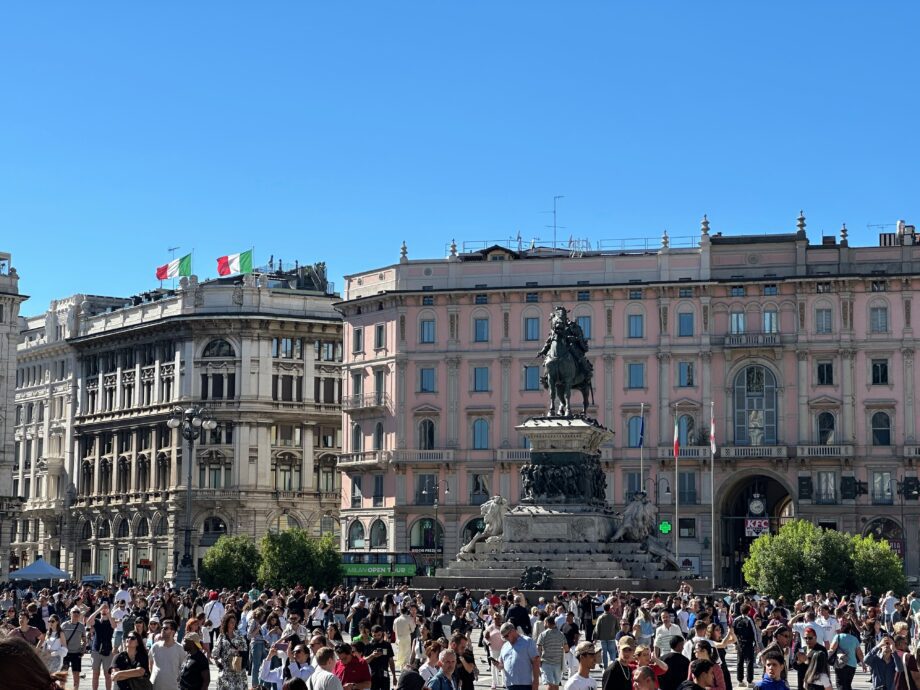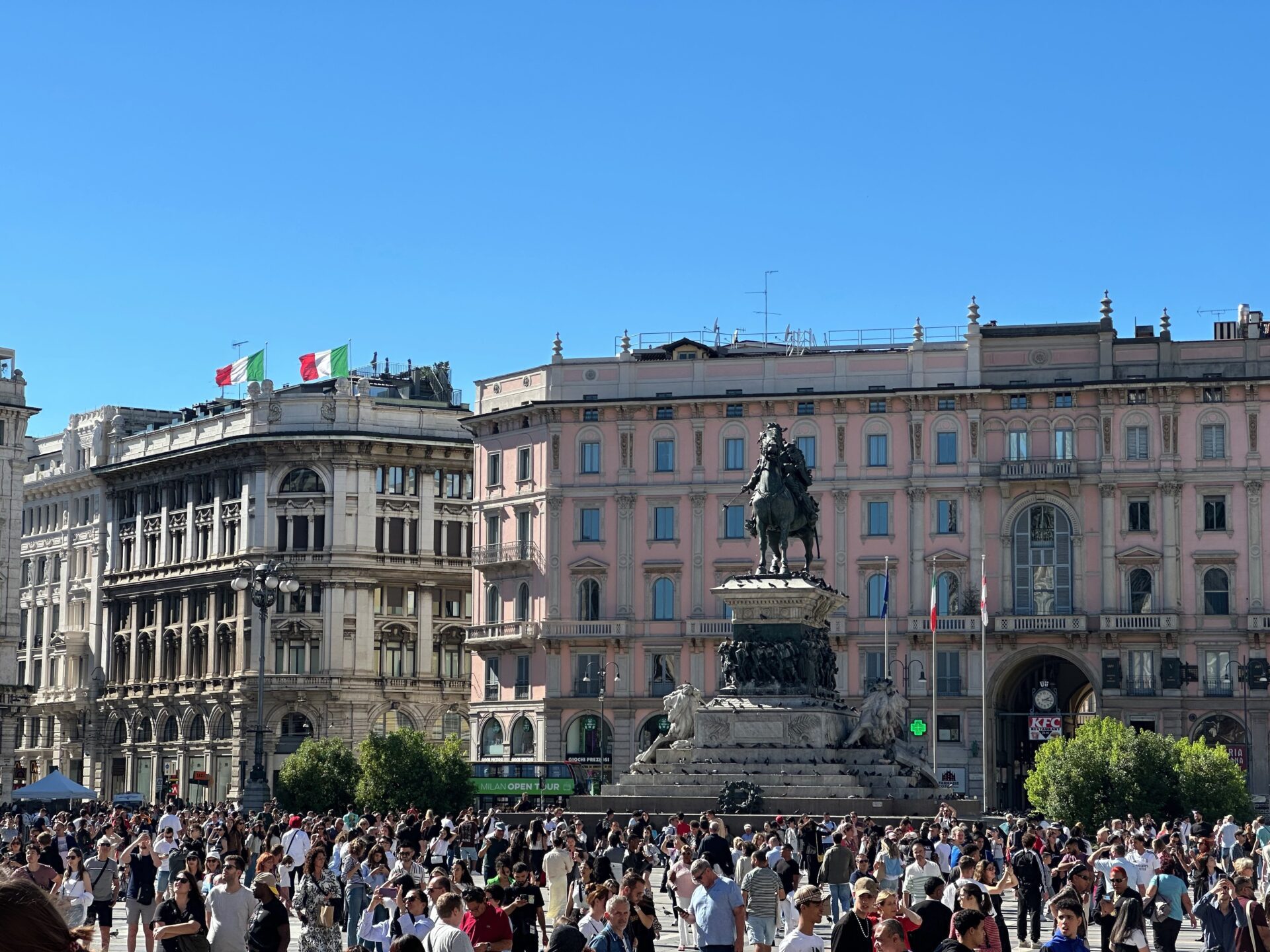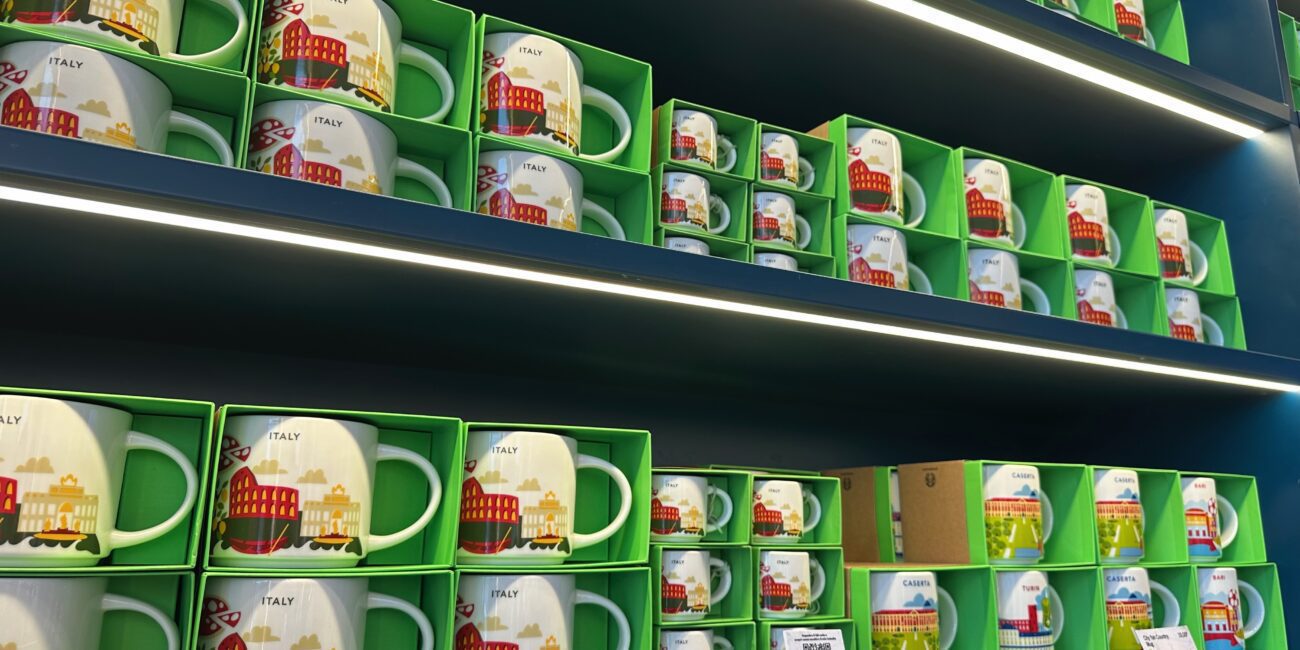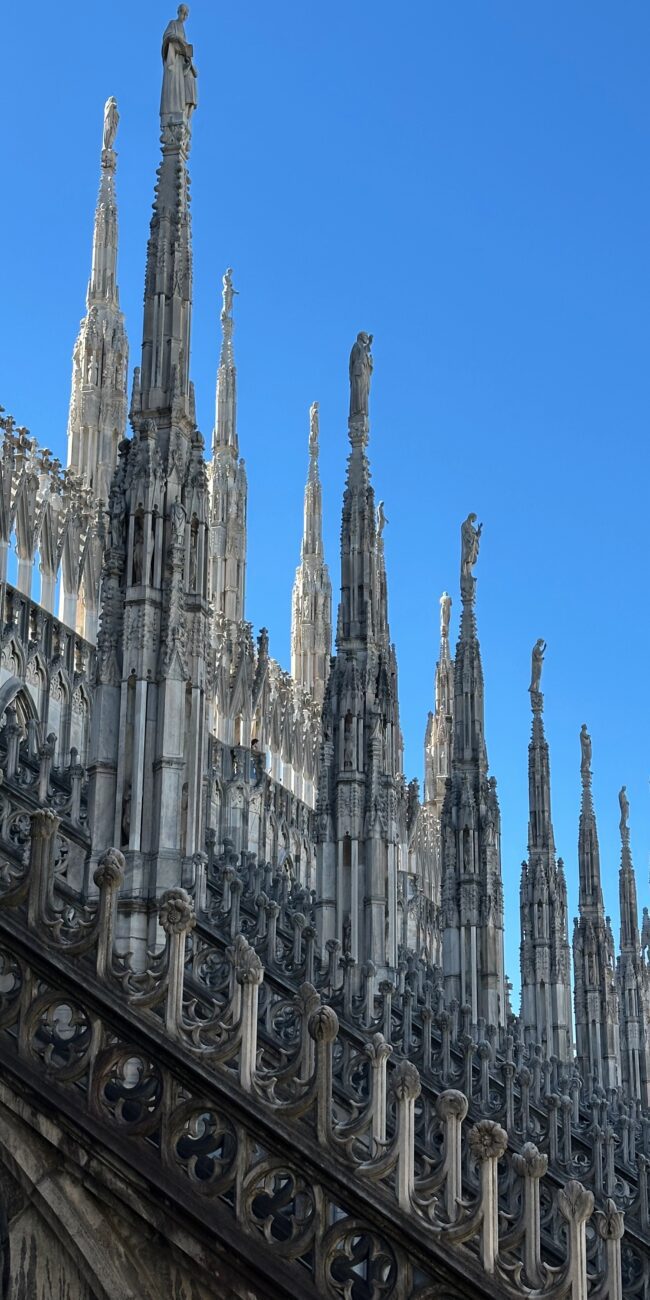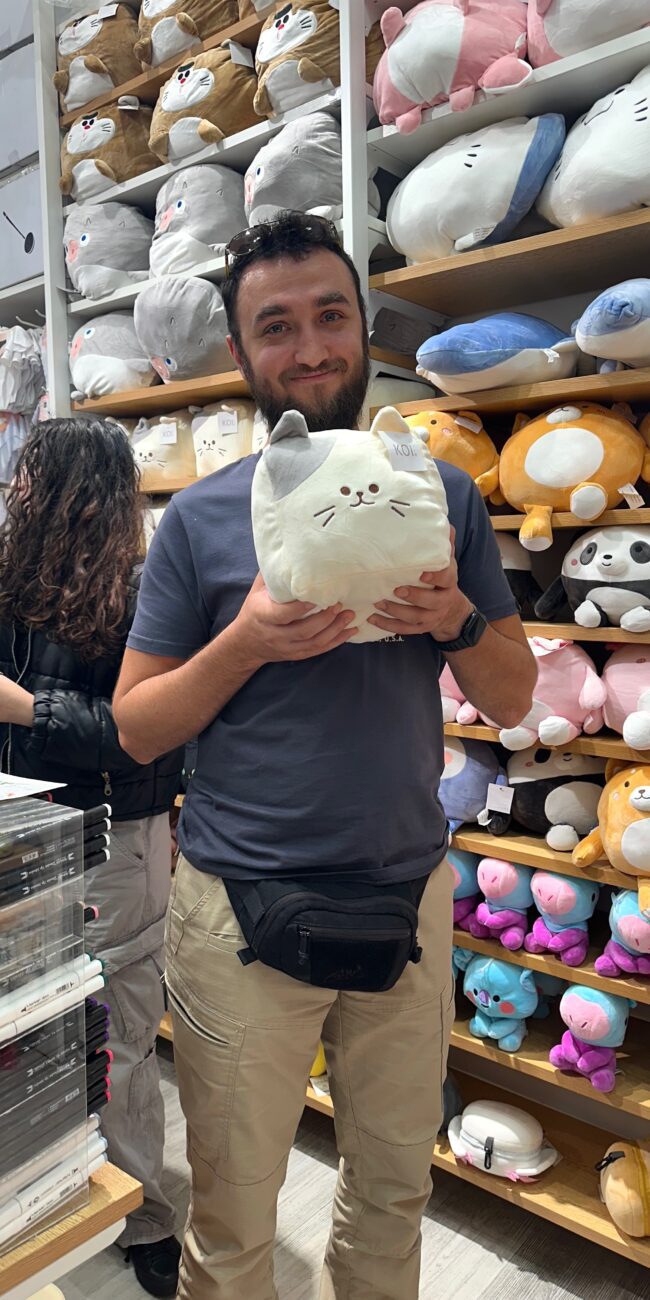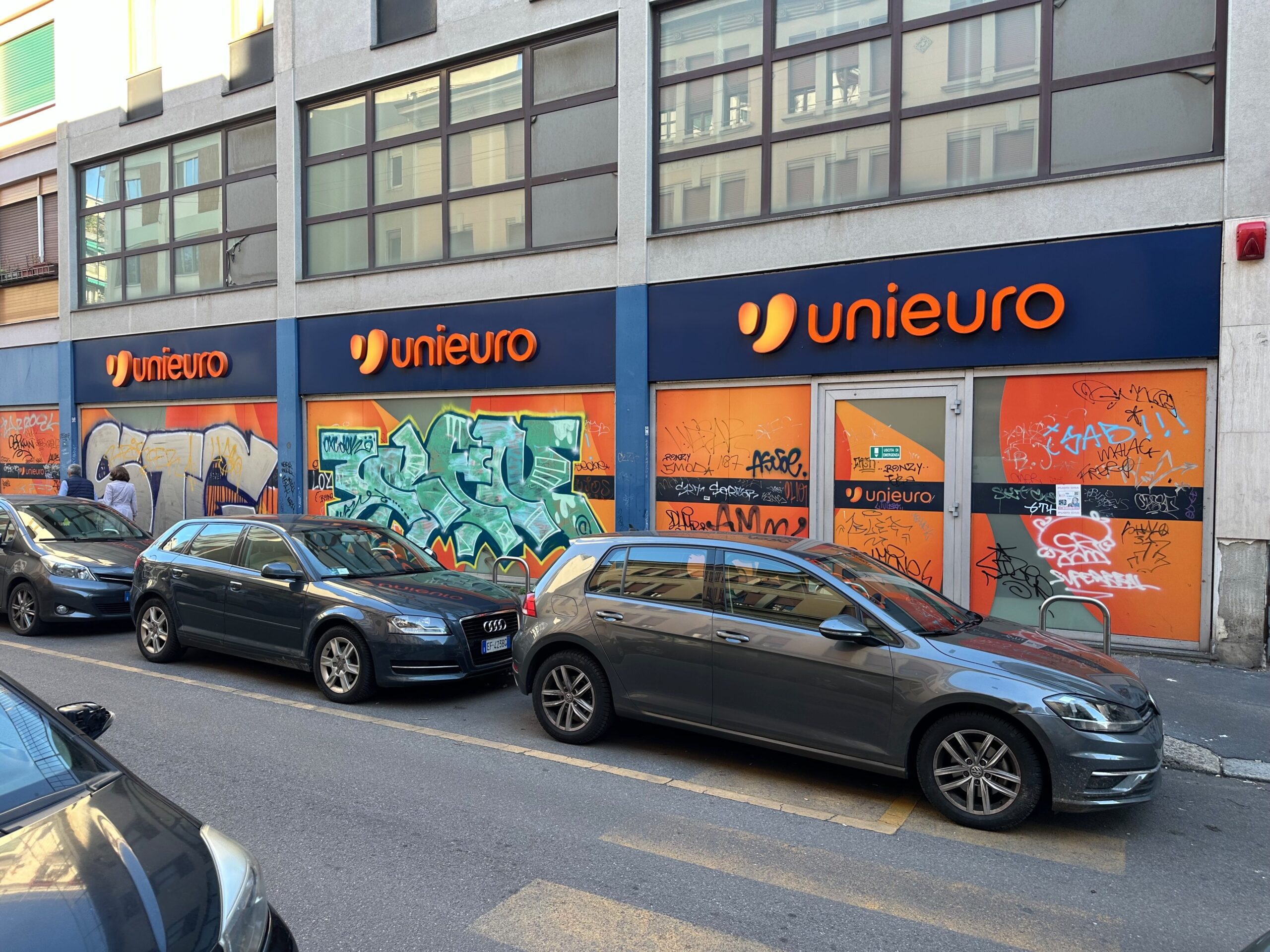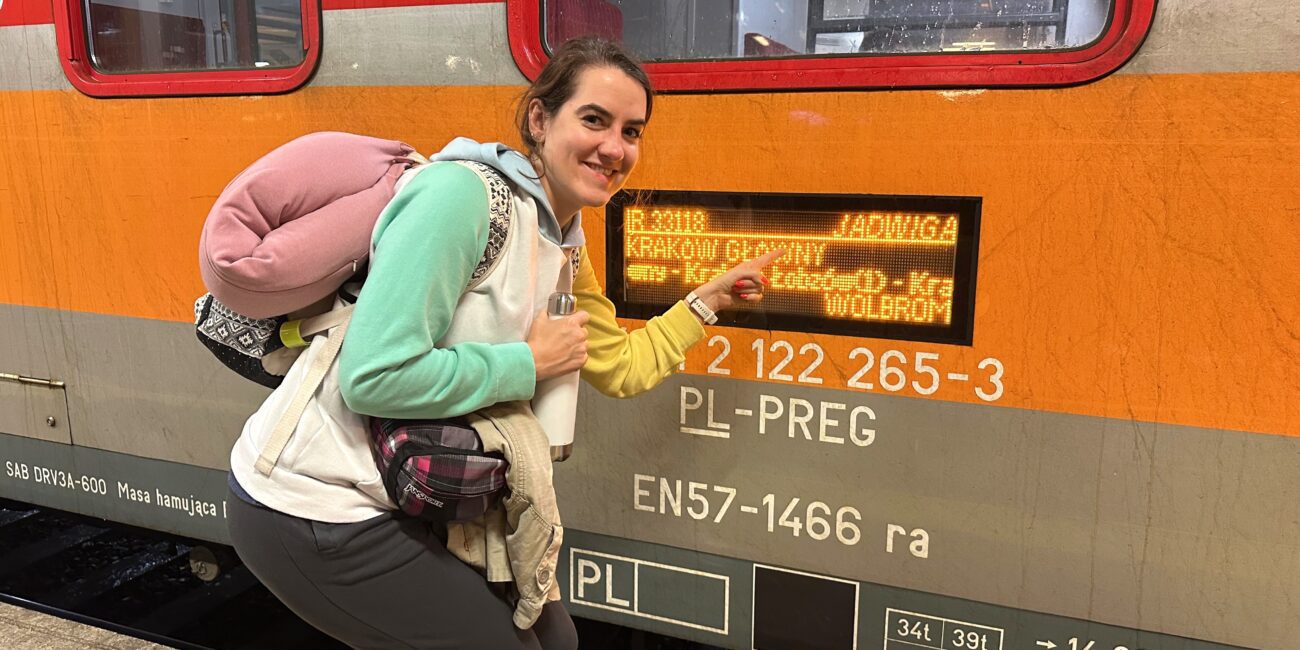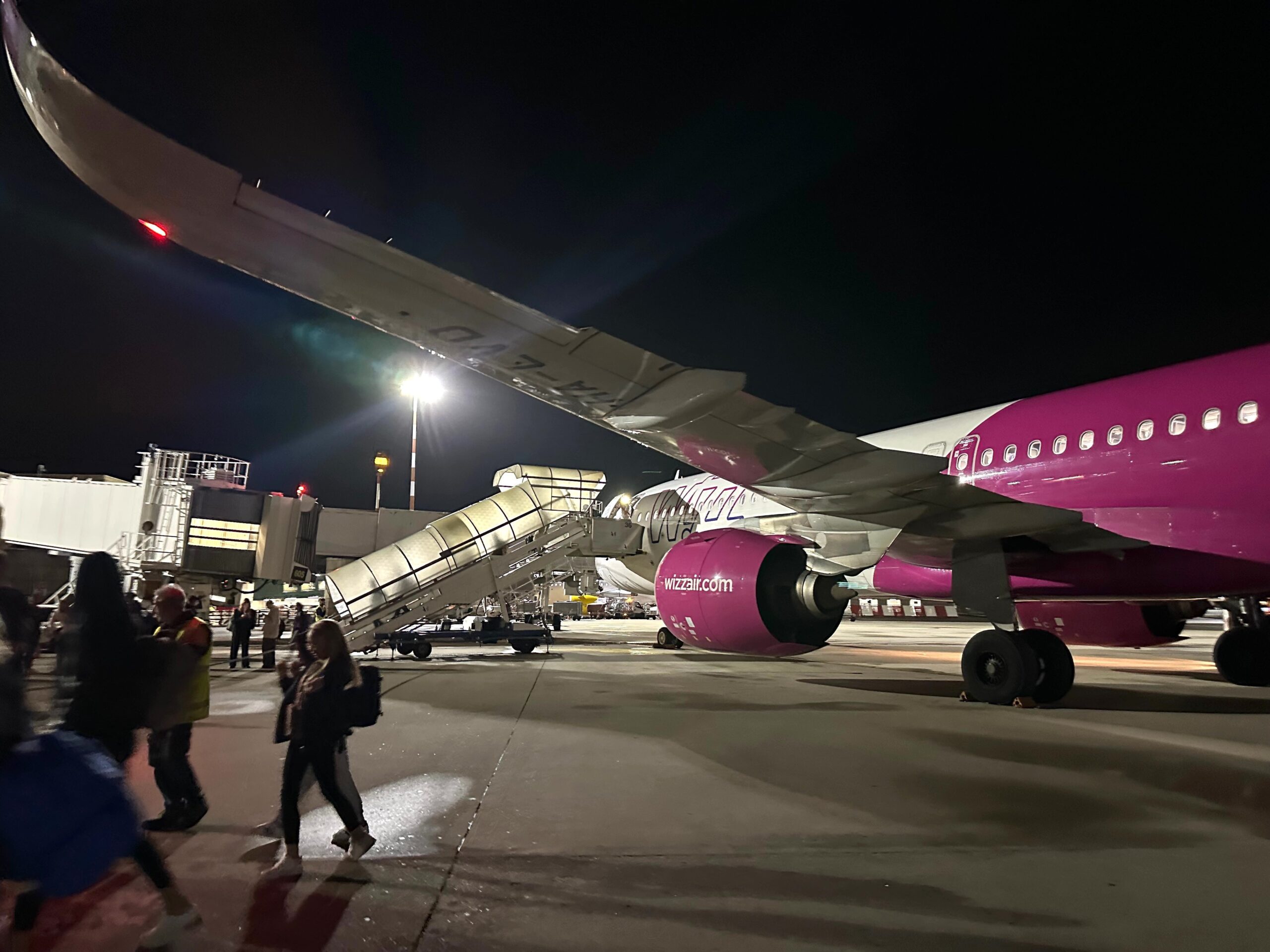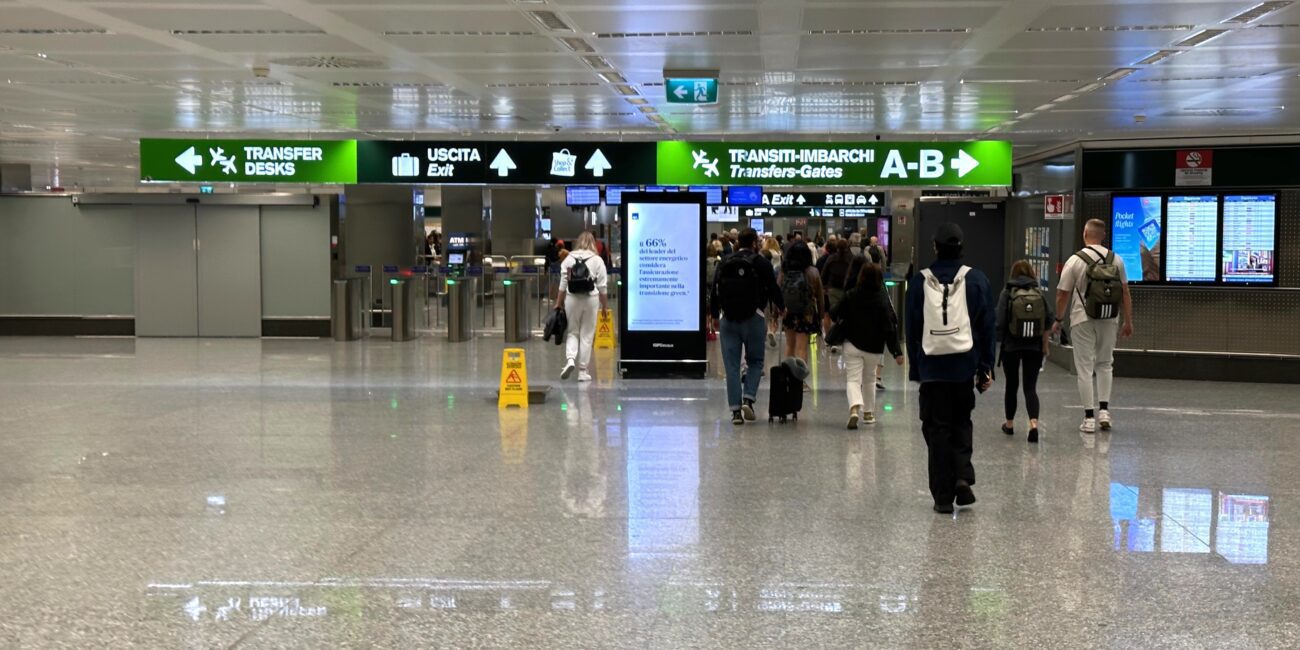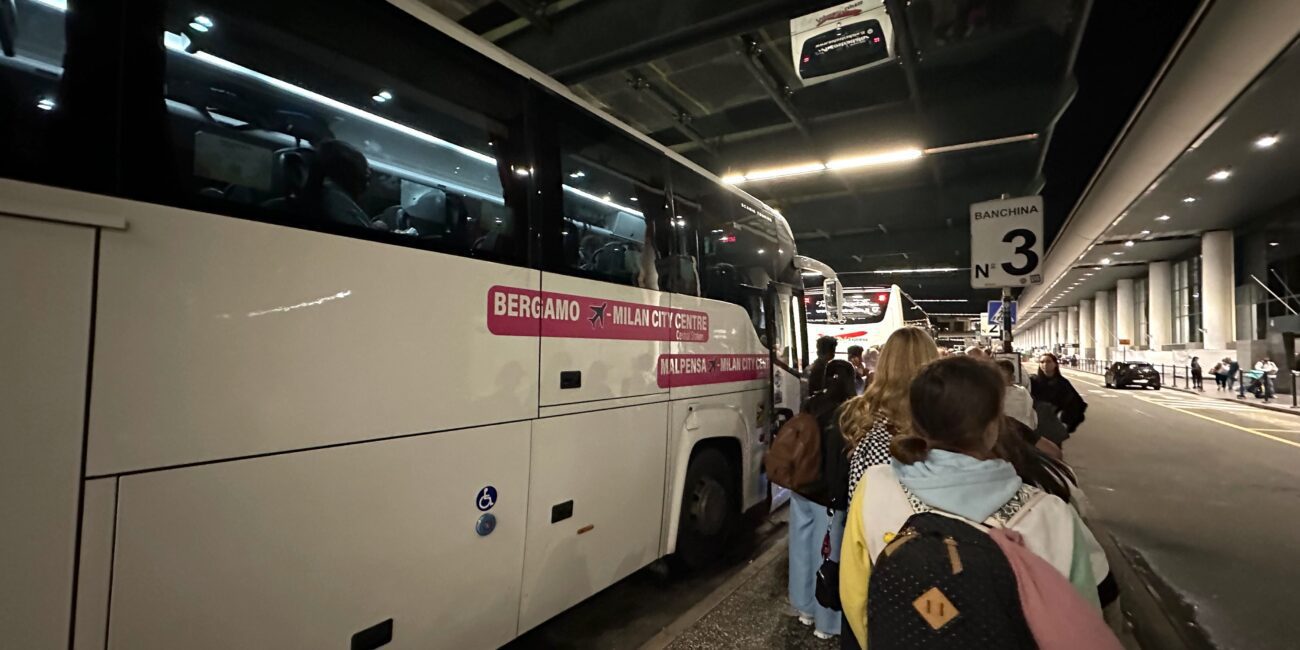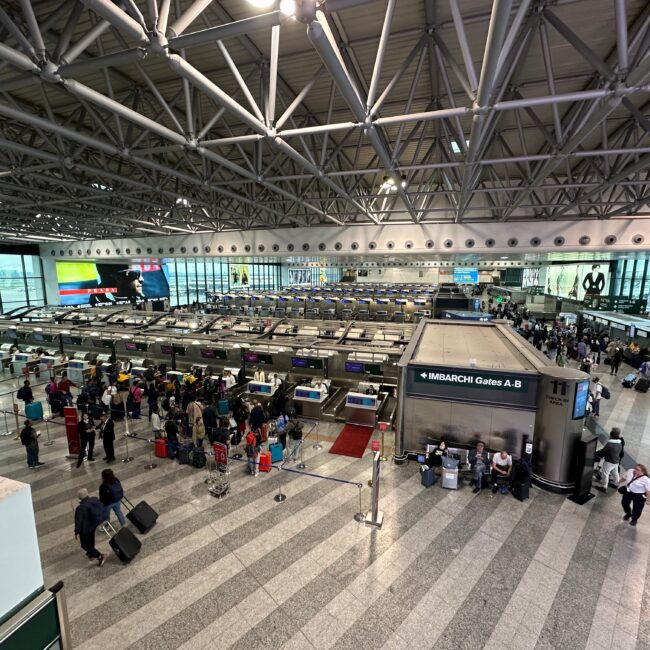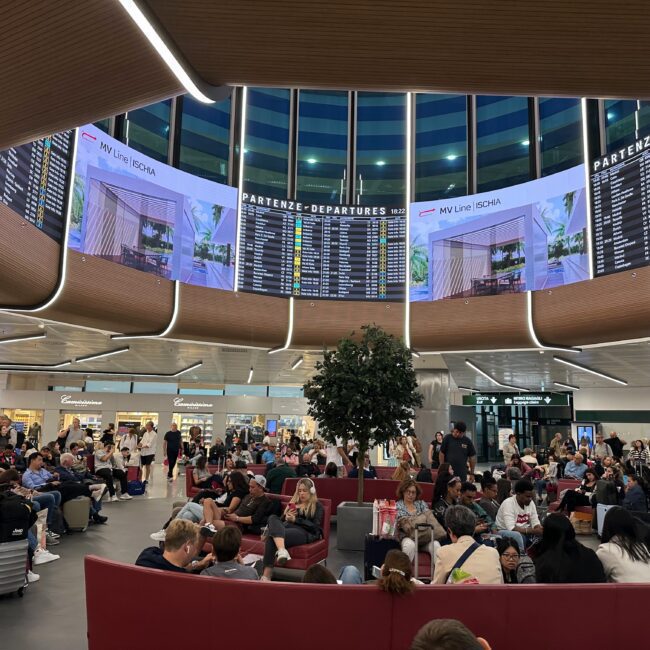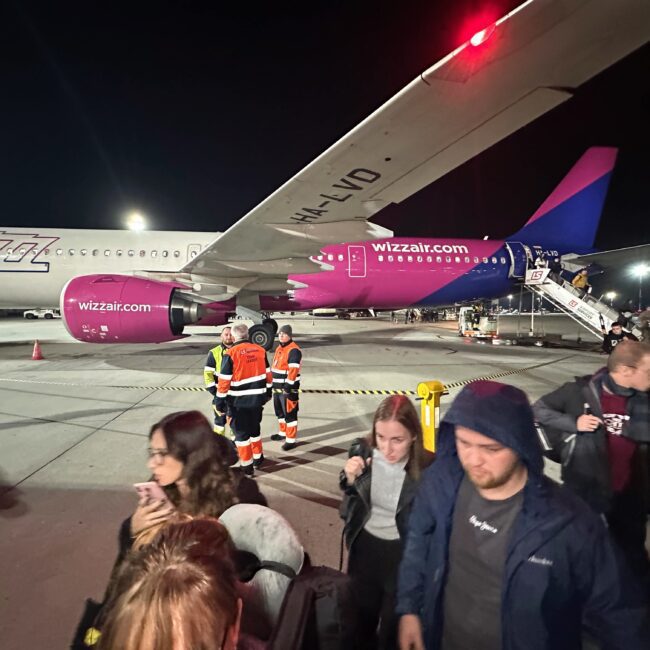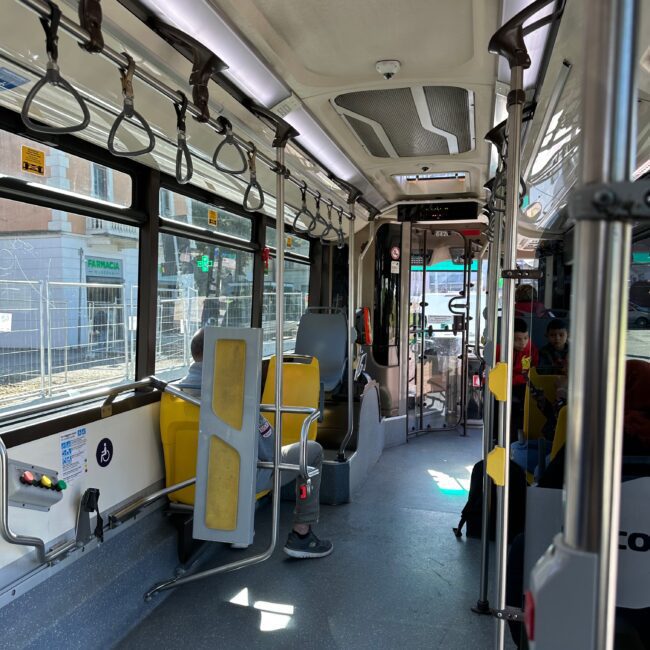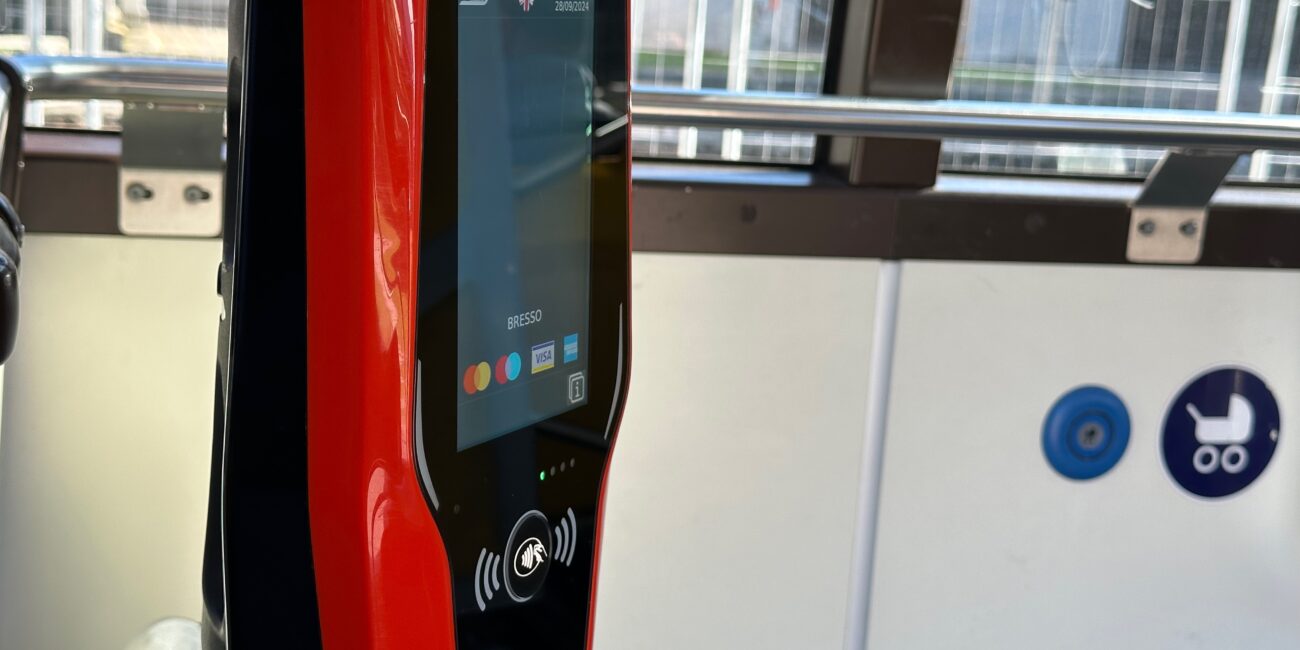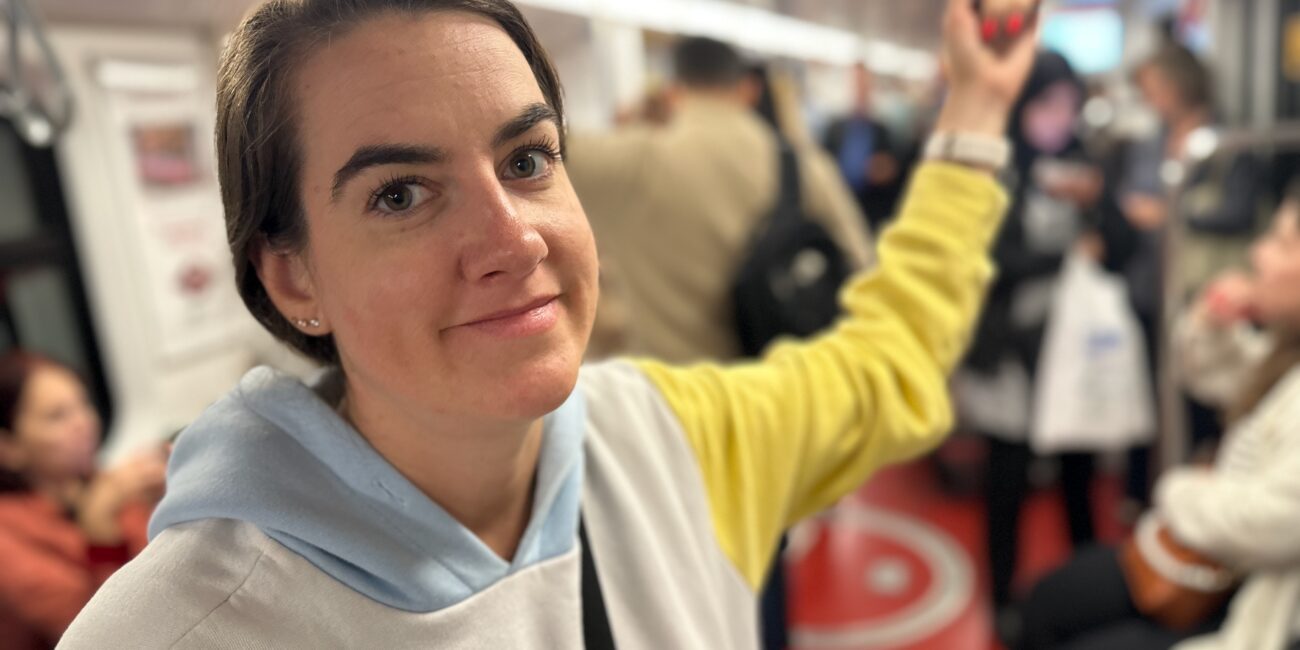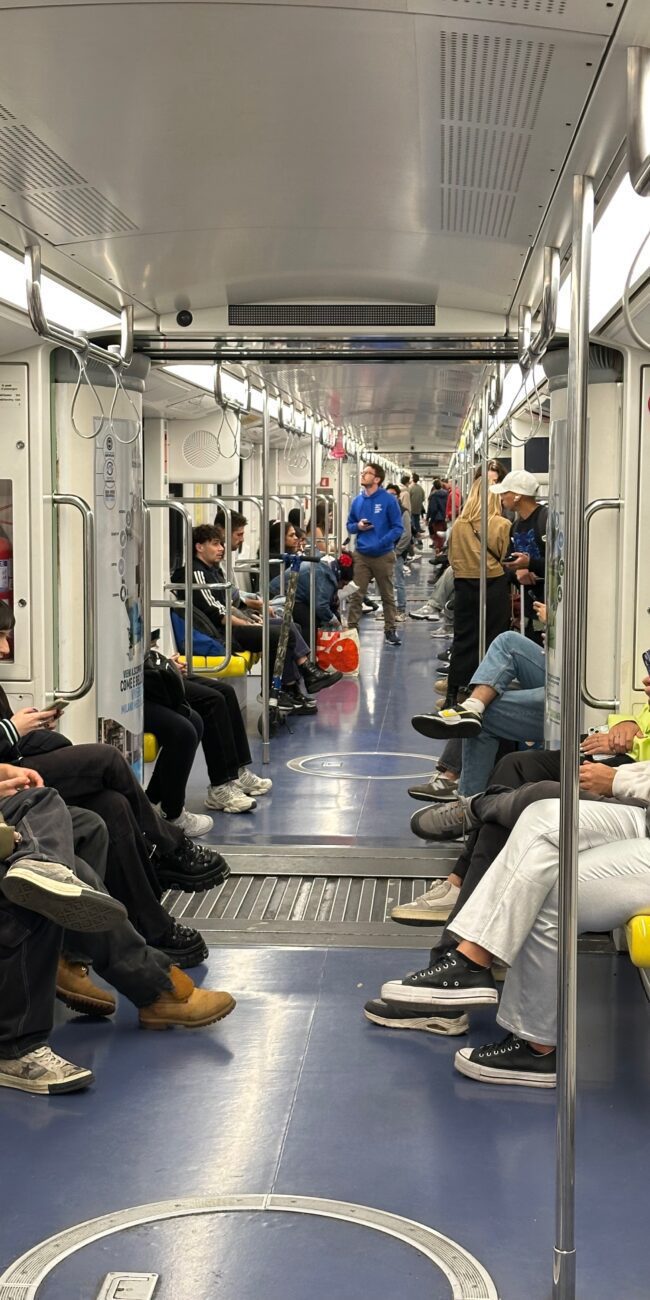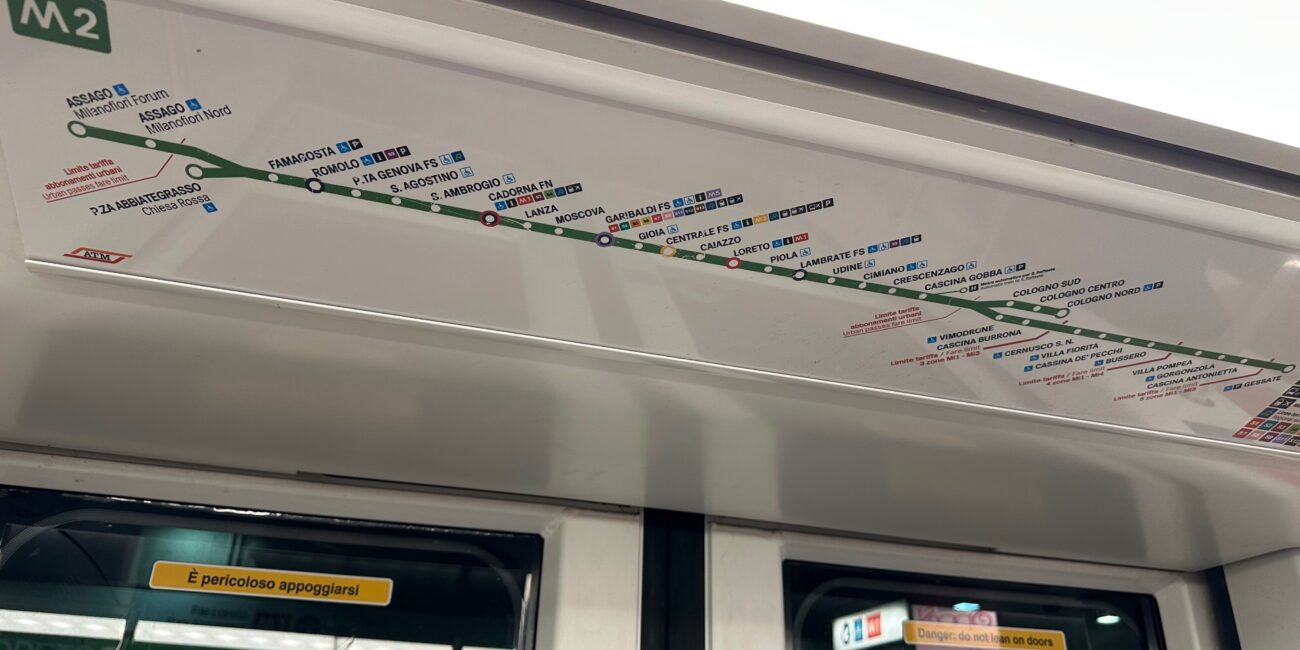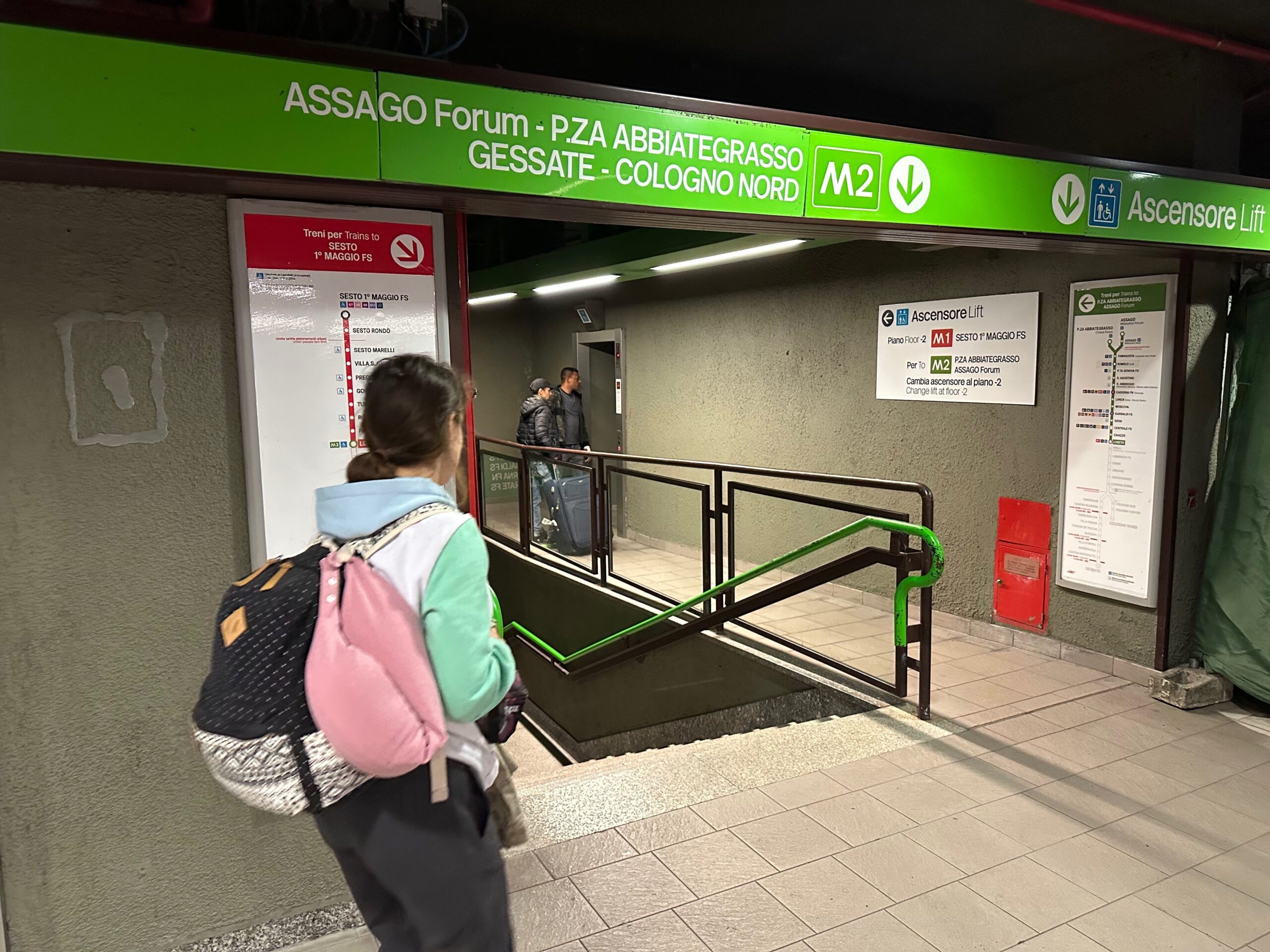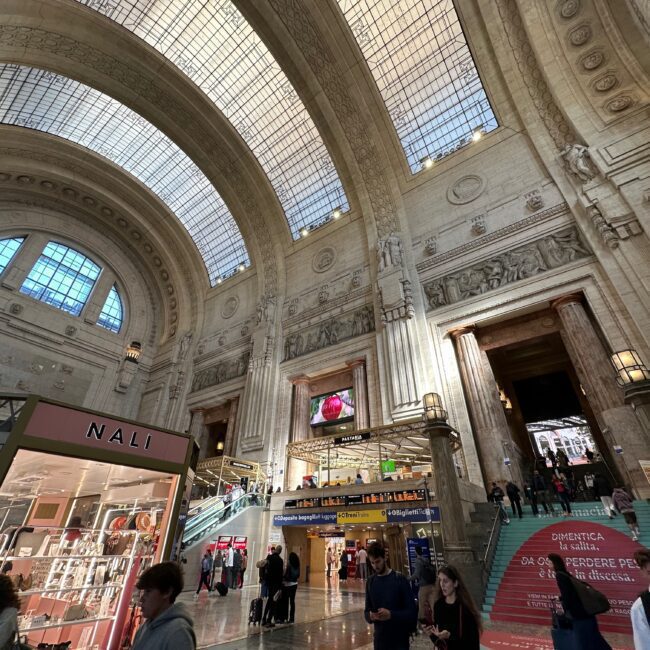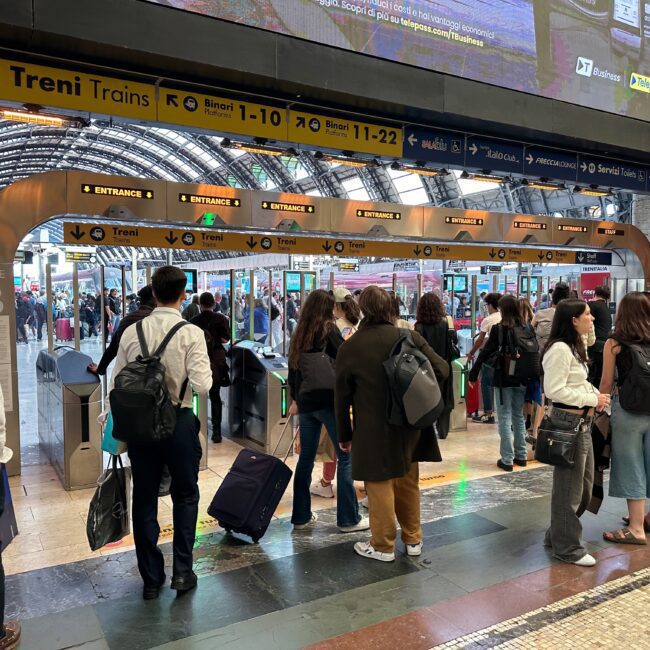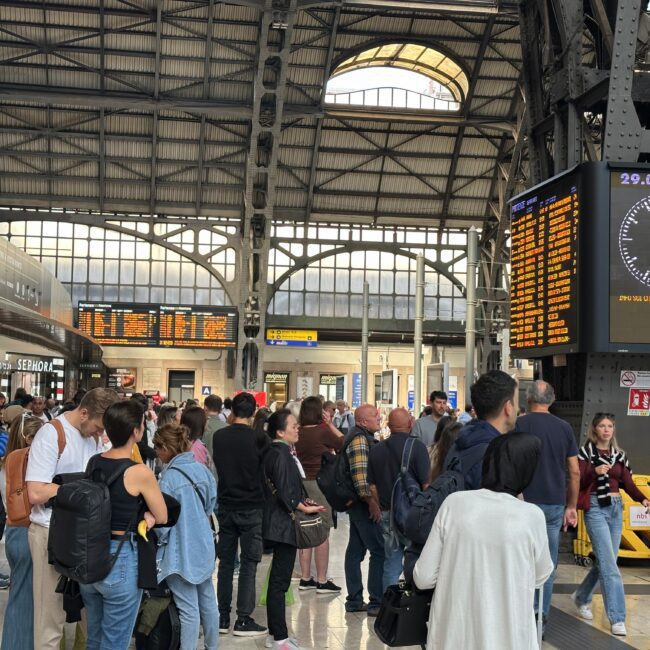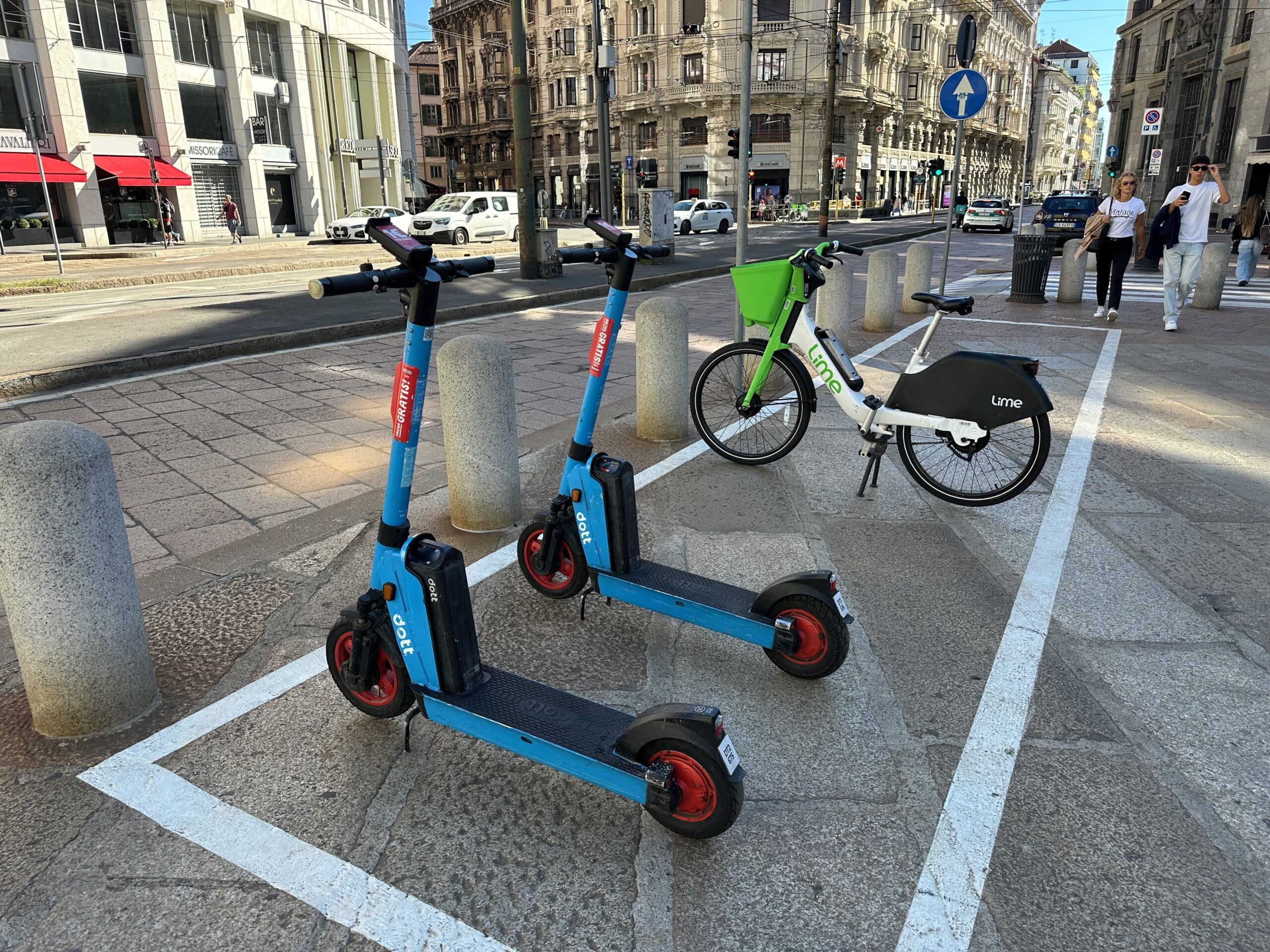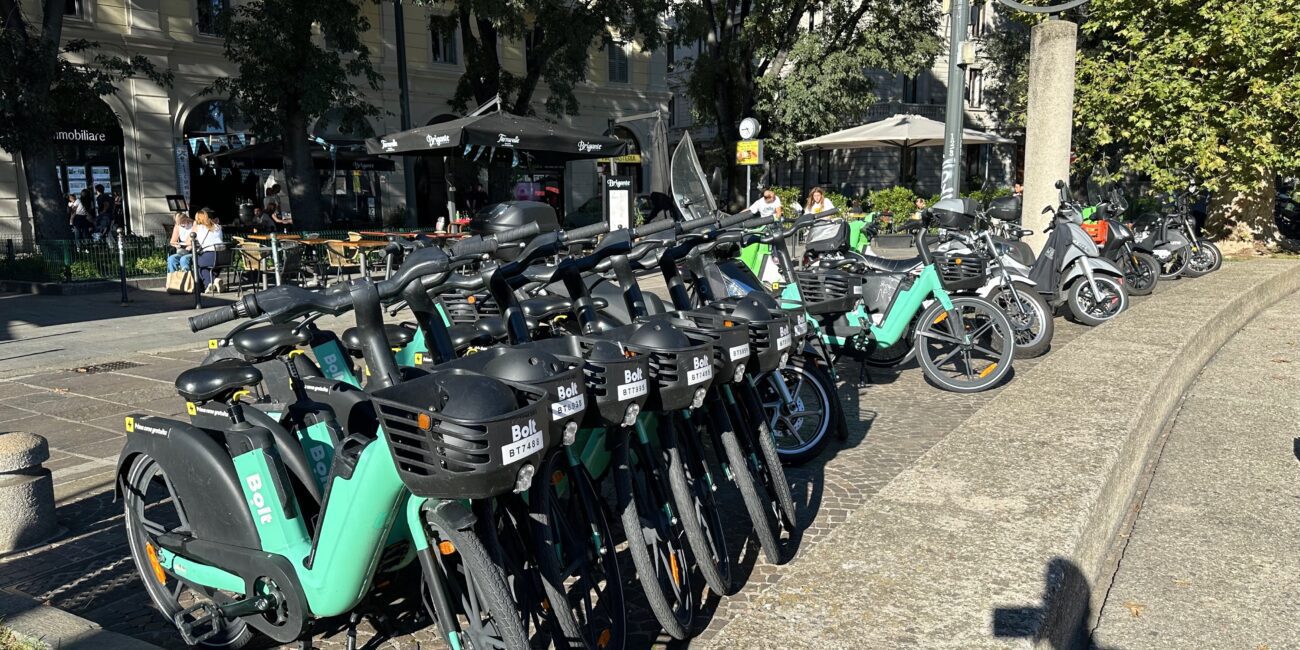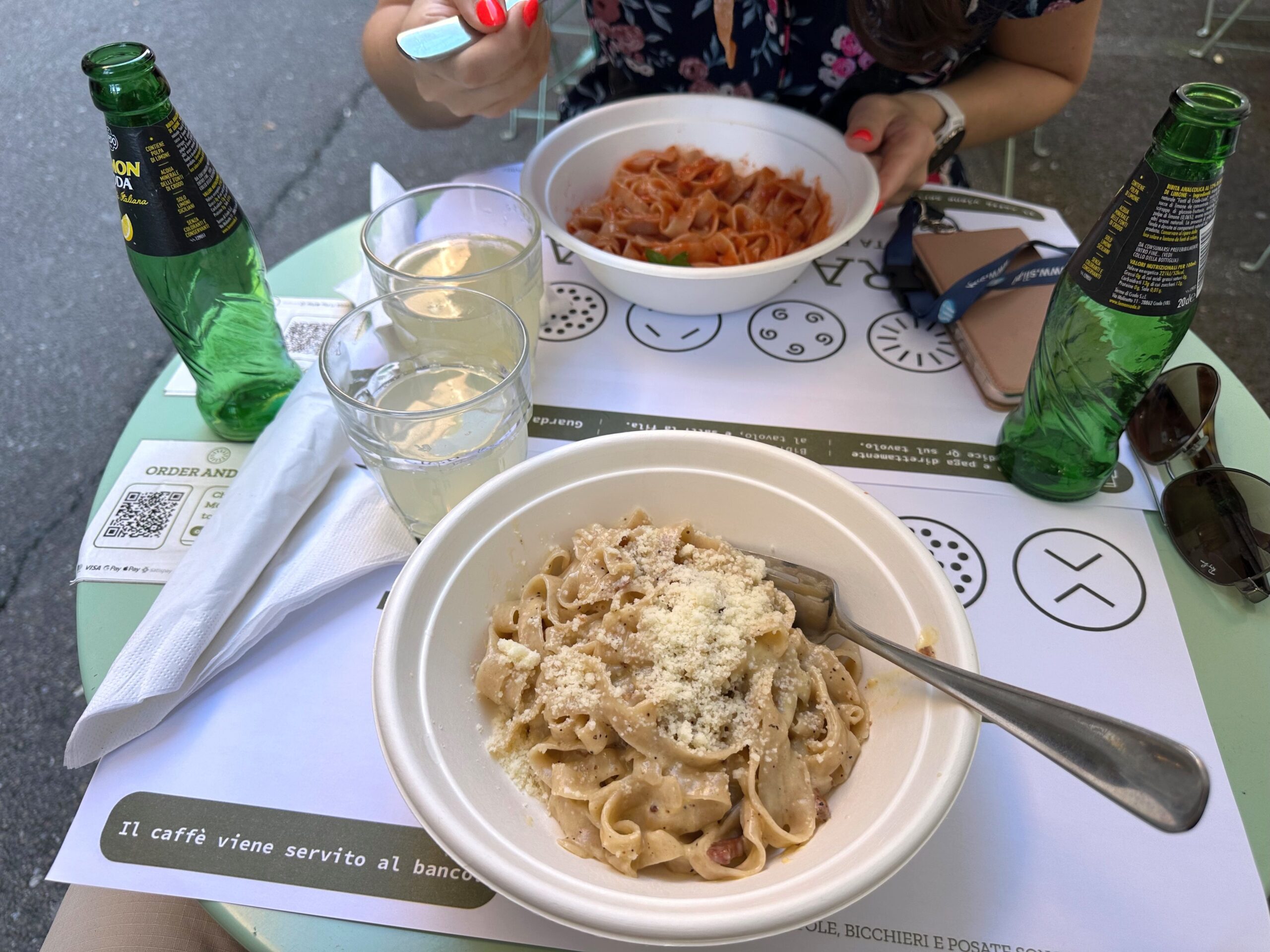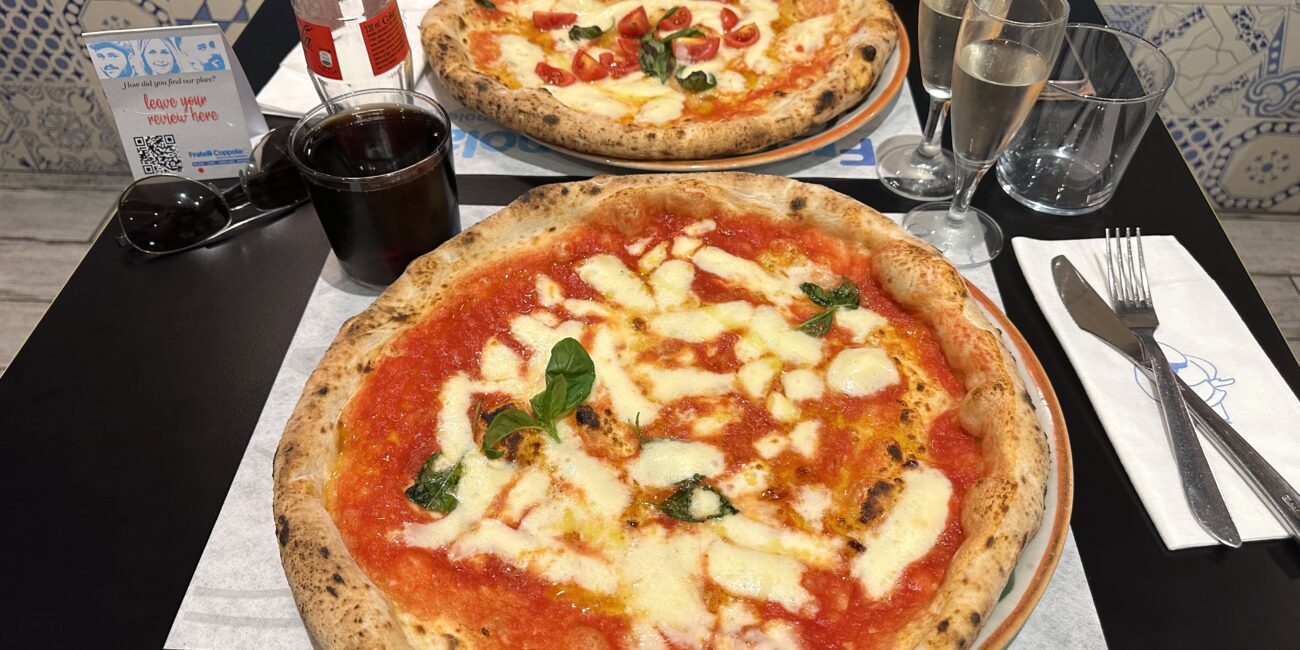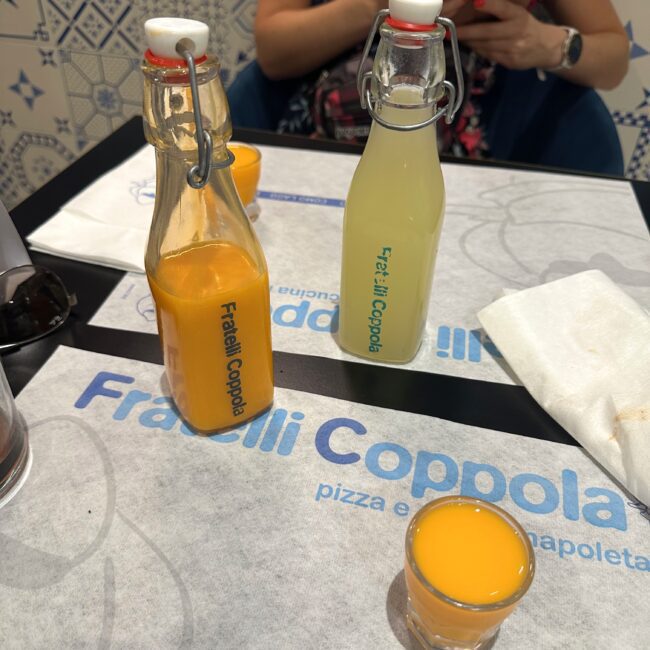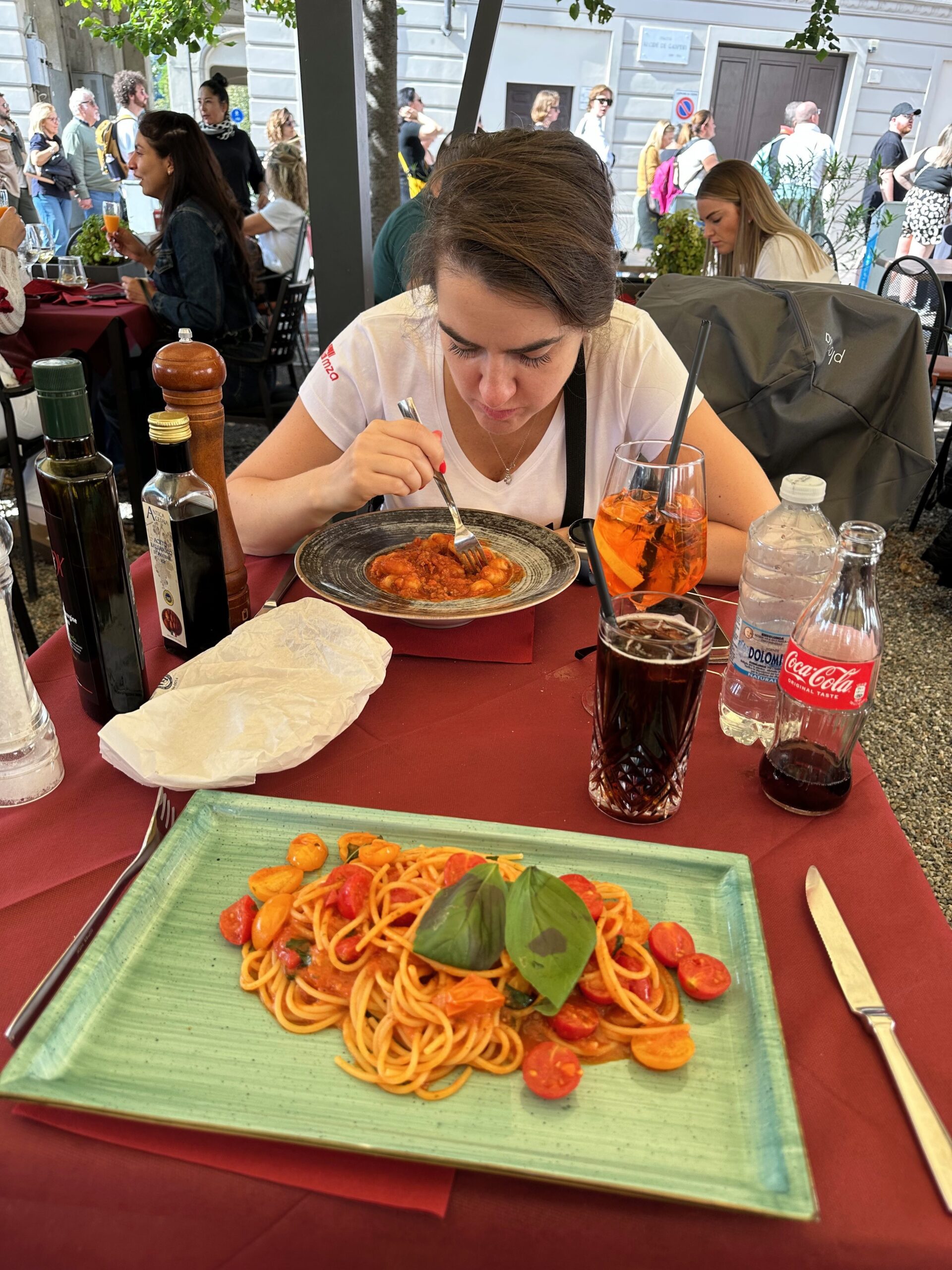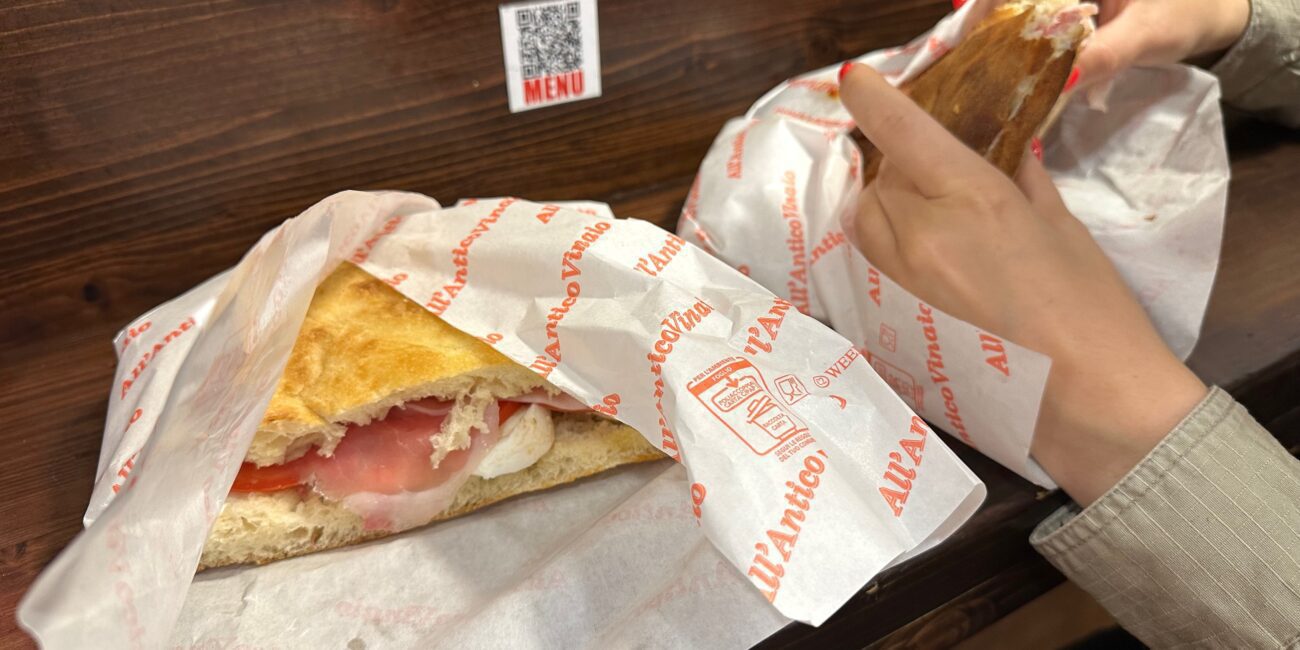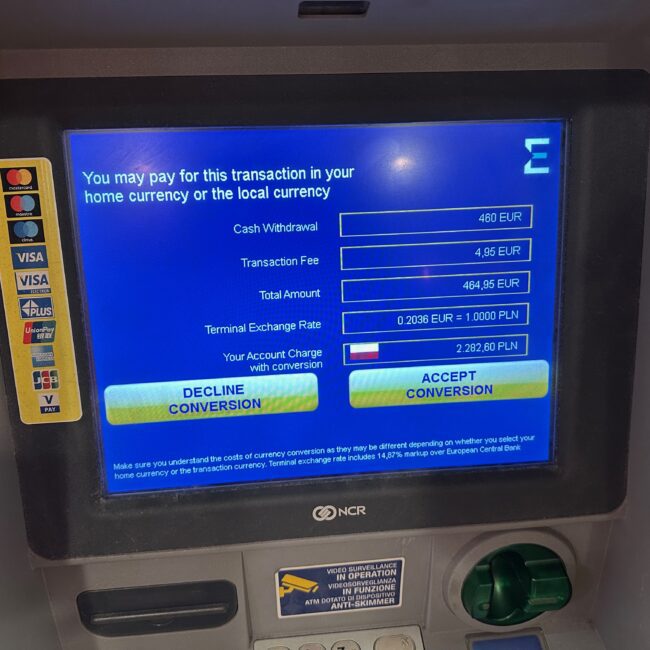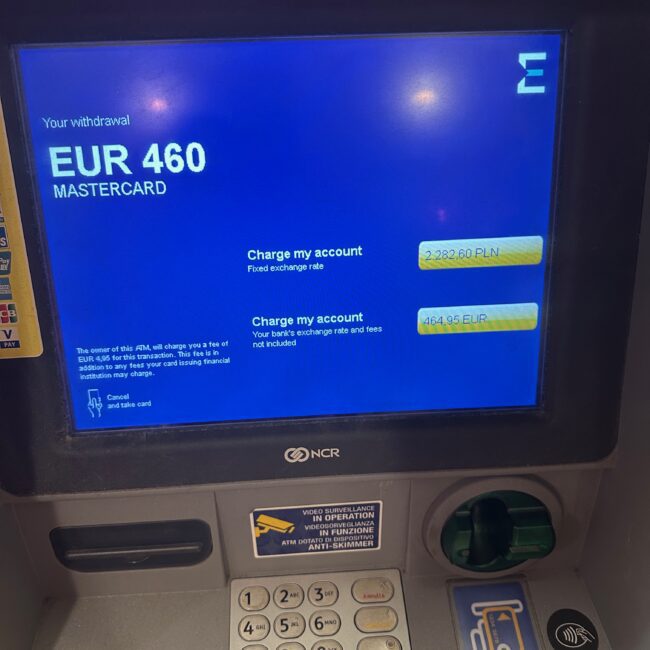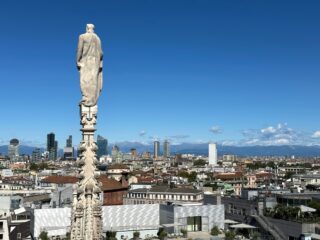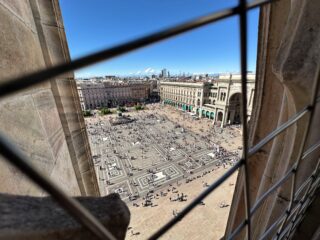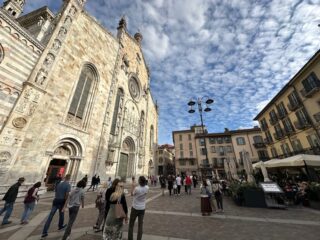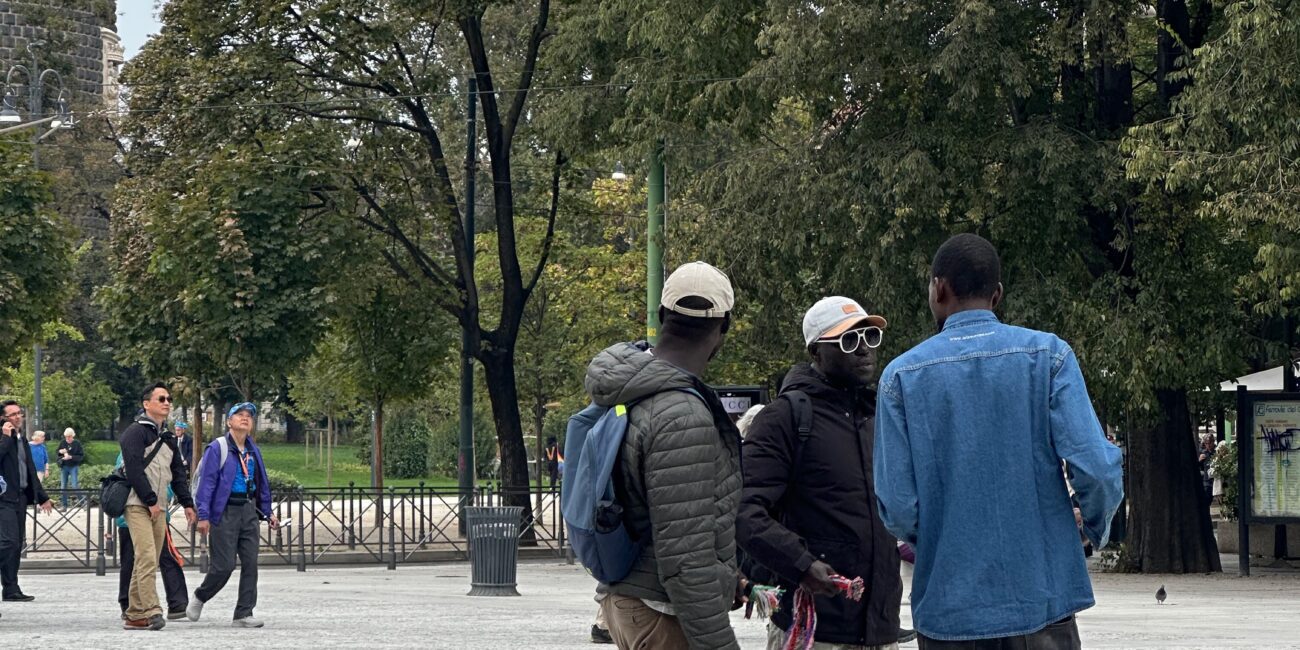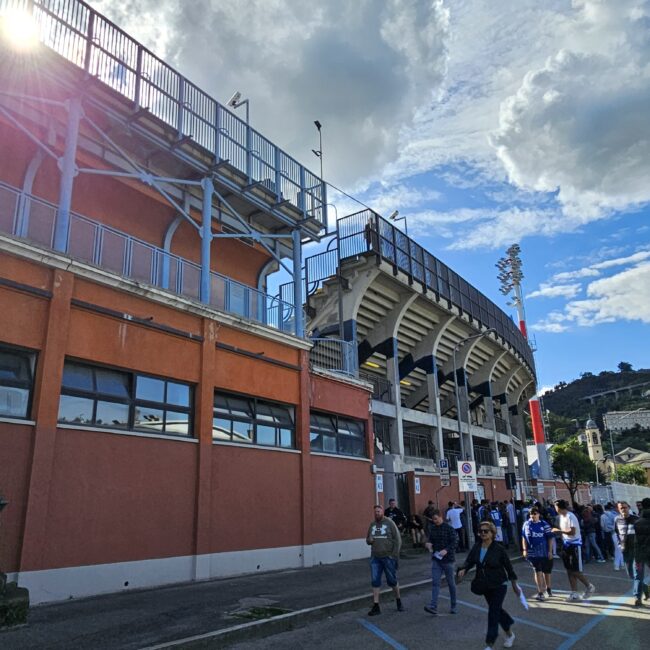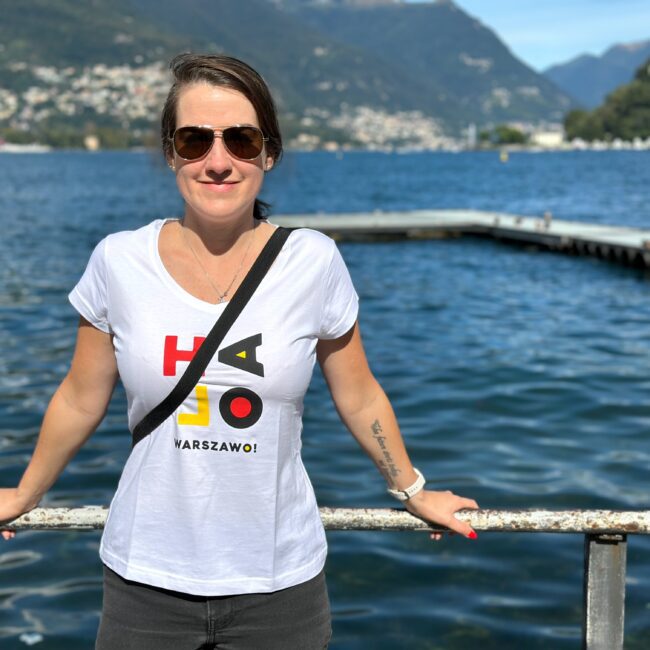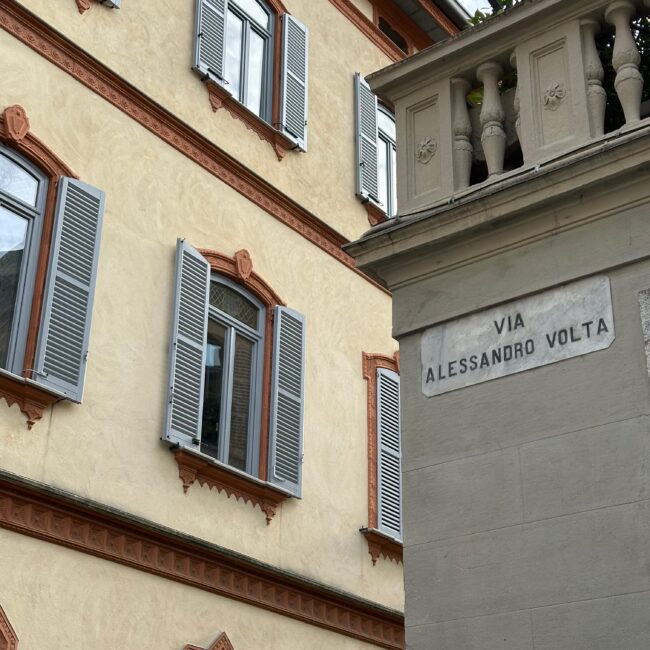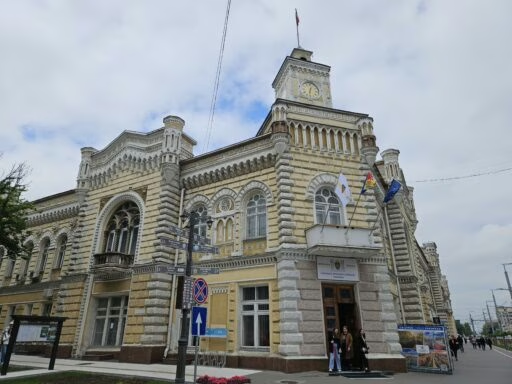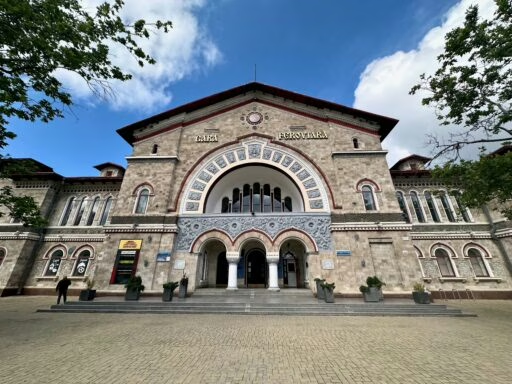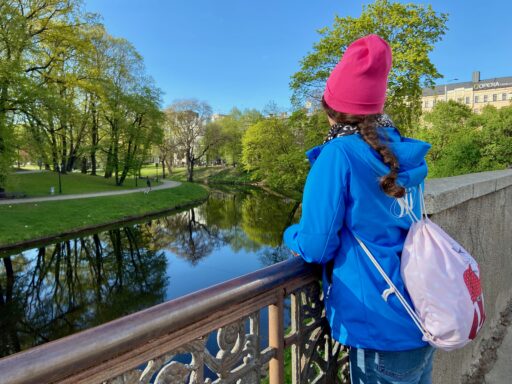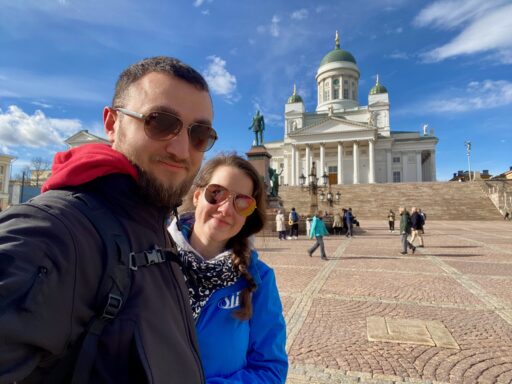This post is also available in:
Polski
Hello! 👋
Milan – the capital of fashion, style and luxury. On the Internet we can find countless descriptions of admiration for its architecture, atmosphere and unique character. So our expectations were high, but the reality turned out to be somewhat different. In September/October 2024 we took a trip to Milan, which certainly has its charms, but not everything looks like it does in Instagram filters. In this article, we share our review, exploring both the positive and less impressive sides of the city.
How did we get to Milan?
More or less two months earlier, we bought tickets for our flight to Milan. We chose Wizz Air, because they offered a good price for a flight from Krakow to Milan Malpensa – the whole thing came out to about 160 PLN per person. I planned this trip to combine it with my event and work from my office in Krakow. This saved time and logistics, as I was able to take care of my work matters, while we planned to fly out for the rest of the trip.
I left my car at the company’s parking lot, and we got to the airport by train. The train tickets cost us 18 PLN per person, so it was a convenient and inexpensive option. The Krakow airport itself made a strongly average impression on me – a bit like a “chicken coop”. For the number of flights and passengers they handle, it’s just too cramped, and it could use an expansion to make the whole thing more comfortable.
Flight
While we were waiting for our flight, Jadzia used the time to work – she was busy proofreading text for another blog post we had planned to publish before this trip. The flight itself was trouble-free, but we were seated separately. In my case it was quiet, so I could relax, but Jadzia was less fortunate – behind her sat a child, who for most of the flight “showed her dissatisfaction”, which clearly affected her mood. She was a bit annoyed, and I took a nap in the meantime.
Upon landing at Milan’s Malpensa Airport, first impressions were mixed. The airport looks quite old, although it’s clear that it has undergone some upgrades. The general decor and color tones inside were quite strange and not very cohesive, but we were able to leave the airport quickly. The exit process went smoothly, without any delays, so we were able to get on our way to the hotel right away.
Airport bus
Milan Malpensa Airport is not close to the city center – the trip to Milan takes about an hour. We opted for the convenient option of taking the Terravision bus, which runs regularly between the airport and Milan. We bought two-way tickets, which turned out to be economical. The tickets were purchased on the carrier’s official website.
Terravision offers several stops in the center of Milan. Most often the coaches stop at Milano Centrale station, the main train station, which is a good option if one plans to travel further or stay overnight in the area.
In addition to coaches from Terravision, there are other ways to get from Malpensa to the city. You can choose from the Malpensa Express train, which runs directly to Milano Centrale or Milano Cadorna station, offering a quick connection in about 50 minutes. Alternatively, you can take a cab or private transfer, but these options are much more expensive than public transportation.
Way back
The way back went without any major problems. Our flight was in the evening, and we returned to Warsaw from Krakow at night. We arrived at Malpensa Airport again by Terravision bus, for which we had already purchased tickets. Although we found out about our gate quite late – eventually we arrived in Krakow on time.
Still at the airport in Milan, we experienced a not very pleasant scene – a few Poles got into a rude argument with some Russian woman. This unfortunately confirmed the stereotype that Poles abroad often show us in a bad way. Malpensa airport itself does not impress with its organization – in key places, such as the main corridors, there was a shortage of seats, so most people just stood around. In addition, we were surprised by the strange (and unnecessary) price difference – a “You are here” cup from Starbucks at the airport was almost 3 euros more expensive compared to prices in the city, which was really unusual in our travels. Standard already, of course, is the excessive price for a bottle of water – where in Arab countries it can cost the same as in the city.
Krakow > Warsaw
Upon arrival in Krakow, we wanted to get to the center quickly, but as usual, the local organization failed. The train was leaving 10 minutes after our arrival, and the next one was only an hour away, so we decided to order an Uber. It turned out to be reasonably priced, so we made it to the Main Station without any problems.
From there it was just a quick trip to the company’s parking lot, from there by car to Warsaw. Three hours of driving, cats fed, and we could finally go to bed!
Documents
Traveling to Italy by plane, we did not need to take passports, as we were traveling within the borders of the European Union, where an ID card is sufficient. However, it is worth remembering that the mObywatel application for Polish citizens in this case does not apply – you must carry a physical plastic ID. If you plan to rent a car or other means of transportation in Italy, it is also necessary to have a physical driver’s license. It is no longer necessary to have an international driver’s license, which is a convenient simplification.
In addition to documents, it is worth taking care of adequate insurance. Private health insurance is a reasonable option that can protect us from unexpected medical costs. It’s also a good idea to get an EHIC (European Health Insurance Card) card, which provides access to public health care in European Union countries on the same basis as for citizens of the country.
Traffic conditions
Road conditions in and around Milan are at a level that can be described as typically European. If you have traveled in EU countries, you will not find Milan particularly challenging. Of course, traffic is quite intense, especially during rush hour, but this is typical of large cities. Compared to places like Africa or Asia, where road chaos is more common, Milan comes off much more orderly. Although we didn’t rent a car, observing the traffic, it’s safe to say that anyone with experience driving in European cities will manage without a problem.
Road condition
In Italy you will find different types of roads: from highways, which are tolled, to local national and municipal roads. The highways are in good condition, and their toll system is relatively simple – you pay for the stretch you have traveled. However, it is worth remembering that traffic in the center of Milan can be a bit chaotic, especially due to the many scooters and bicycles that are very popular here and often move between cars.
In addition, Milan has a so-called “Area C,” or restricted traffic zone. If you plan to enter the inner center by car, you have to pay a fee to avoid a fine. This system operates from Monday to Friday.
Public transport
Bus communication
During our stay in Milan, we used buses every day, mainly because our hotel was located on the suburbs of the city. The journey was not especially inconvenient – it took about 30 minutes as standard, combining metro and bus. As for punctuality, this is where the stairs begin. Do the buses stick to the schedule? It’s hard to say – the schedule probably has some, but not once did we manage to depart according to the time given in Google Maps. A bit of chaos, but survivable.
The buses themselves are fine, although one important thing is missing – boards with full stop schedules inside the vehicle. This is quite a minus, especially in this day and age. One wonders why Italy, in the 21st century, still has a problem with something as simple as a bus stop display. It would be enough to look at how it works in other countries, such as Poland, where passenger information is much better developed.
On the plus side, however, it must be said that on buses you can buy tickets directly using a payment card. At the ticket counter, all you have to do is bring your card close, which is fast and convenient – no need to look for a ticket machine or sales kiosk. This is one of the few technological solutions that works smoothly.
Subway
Milan’s subway system is a well-functioning mode of transportation, which we also used. The subway is fast and well connected to other modes of public transportation, making getting around the city relatively easy. The city has five subway lines. These lines connect the most important neighborhoods and key points in the city, as well as stations where you can transfer to long-distance trains.
Particularly on older lines, train cars and stations do not make the best impression. They are not only visually outdated, but often have an unpleasant smell, and the aesthetics leave much to be desired. Comparing this with the Warsaw subway, it’s hard not to notice the difference – the Warsaw subway is more modern, well-maintained and more pleasant to use.
Fortunately, the M5 (purple) line is a positive contrast. The stations on this line are definitely newer and in better condition than on older lines, and the trains that run there are modern driverless cars. Although the M5 line opened relatively recently (about 10 years ago), the train cars are already showing signs of usage. The interiors, while still functional, do not keep up to the standard one would expect from a modern subway system. The maintenance of cleanliness and freshness is lacking, as can be seen in metro systems in places like the United Arab Emirates, where cleanliness and order in public transportation are maintained to a higher standard.
Ticket fare
As for the ticket fare in Milan, the fare system is simple and easy to understand. Tickets can be purchased at vending machines in metro stations, automated kiosks and directly on buses (by credit card). A single fare ticket costs about €2.2 and is valid for 90 minutes on all public transportation, including metro, buses and streetcars. If you plan to use public transportation throughout the day, it’s worth considering a day ticket, which costs about €7.6 and allows unlimited rides.
Multi-day tickets are also available, which can be cost-effective for longer stays. The ticketing system is integrated, which means you can use the same ticket for different modes of transportation within the city.
👉 For more information on the ticket fare, visit the official website – click here
Suburban railway
Suburban rail in Italy, including Milan, is an important means of transportation for those traveling to nearby cities and towns. We took advantage of this mode of transportation by taking a trip to Como. The trip was comfortable and the ticket was relatively affordable.
To get to the platform, you need to scan your ticket at a special gate. We were leaving Milan’s central station (Milano Centrale), which, as befits a major transportation hub, is incredibly crowded. Here we encountered a problem – our ticket, purchased online with a QR code, was not accepted by the gate. We had to enlist the help of an employee who manually opened the passage for us.
Our first impressions of the station were quite intense – lots of people, chaos, and our “ welcoming” first contact with the city was a man who spit on the ground in front of us and threw a few unpleasant words. Good morning, Milan!
Rail carriers
In and around Milan, several carriers operate suburban rail service, the most important of which are:
- Trenord – the main carrier operating in the Lombardia region, which includes Milan. It operates both suburban and regional lines, connecting Milan with surrounding cities such as Como, Varese and Lecco.
- Trenitalia – Italy’s national carrier, which also offers regional and high-speed intercity connections. Trenitalia operates major connections between major cities such as Milan, Turin, Rome and Naples.
- Italo – a private carrier specializing in high-speed trains, offering competitive connections between major cities, but less frequent suburban service. Italo is mainly an alternative to Trenitalia for long-distance travel.
Micro-mobility
Several personal transportation options are available in Milan, the most popular of which are Lime electric scooters and bicycles and bikes from Bolt. These means of personal transportation are widely used in the city, offering a quick way to get around crowded streets.
Both operators require compliance with rules regarding parking and use of scooters in the city. The scooters must be parked in specially designated areas, and inadequate parking can lead to fines.
Accommodation
During our stay in Milan, we decided to stay at the Neo Hotel in Bresso, located a little farther from the city center. We chose this hotel mainly because of the favorable price, which included breakfast. Even taking into account the cost of the daily commute by public transportation to the center, the whole thing came out cheaper than accommodations in closer places.
SIM card
While in Milan, we did not need to use a local SIM card. Our Polish numbers worked without additional roaming charges, in accordance with EU regulations. This is a big advantage of traveling in Europe, because you can use the Internet, make calls and write messages without worrying about additional costs.
However, it’s worth checking your contract with your operator, because although roaming is free under EU regulations, it doesn’t mean you have unlimited data access. There is usually a limit to how much data you can use while roaming, depending on your plan. It’s a good idea to check how much data you have available so you’re not surprised by additional charges if you exceed your limit. If the data limit turns out to be too low, you can consider buying a local SIM card.
Food
Italy is world-renowned for its cuisine, and eating here is a true experience. From classic pastas like spaghetti and lasagna to a variety of pizzas, there is something for everyone. In Milan, we had the opportunity to try several variations of these traditional dishes, and each place had its own unique character.
Of course, there were also culinary adventures beyond Italian cuisine. During our stay, we ended up in the Chinatown district, where we found Thai Chang beer – we couldn’t resist the temptation to revisit this taste. While drinking Thai beer in Italy may seem like an unusual choice, it was a pleasant surprise and a reminder of our previous travels. It was such a fun little escape from traditional Italian flavors.
Exchange office or ATM?
We have long used currency cards to withdraw cash from ATMs, which is convenient and cost-effective because it eliminates the need to look for exchange offices. In Milan, however, ATMs may charge fees for withdrawals, and the amount depends on the ATM operator. ATMs at large banks, such as UniCredit or Intesa Sanpaolo, usually do not charge extra fees for cash withdrawals, especially if you use a card affiliated with global networks such as Mastercard or Visa. However, it’s always a good idea to make sure your bank doesn’t charge an additional fee for foreign withdrawals.
On the other hand, private ATMs, such as Euronet, often charge higher fees, which can reach up to several euros per transaction, and in addition, they may offer Dynamic Currency Conversion (DCC), which results in unfavorable currency conversion (it is better to choose to withdraw in the local currency, i.e. EUR). For this reason, it is better to avoid such ATMs, especially in tourist destinations where these fees are higher
Payment claim
We encountered a problem during payment at one restaurant in Milan. We ordered food through an interactive menu available in the browser, where we also made payment by card. Unfortunately, payment through my Curve card did not work properly – twice the funds were charged to the card, but the payment form did not process the transaction correctly. Only the third time did everything work, which forced me to pay for the order again.
Fortunately, there is a tool, chargeback, that allows you to recover wrongly charged funds. Chargeback is a tool that allows you to get your money back if you have a problem with a card payment, such as an incorrect charge, failure to process a transaction, or an incorrectly processed payment.
Currently, my complaint is being processed by the bank and I am waiting for a refund for the first two failed transactions.
Climate and weather conditions
Milan has a continental climate with marked differences between seasons. Summers in Milan tend to be hot and humid, with temperatures often exceeding 30°C, which, combined with the humidity, can feel stifling. Winters, on the other hand, are cool, with temperatures dropping to around 0°C, and sometimes even snowfall occurs. Spring and autumn are milder seasons, but can also be rainy, especially in autumn, when precipitation is more frequent.
During our stay in early October, Milan greeted us with typical weather conditions for this time of year. Autumn in Milan, especially in October, is a time of moderate temperatures, usually between 15°C and 20°C, which is conducive to sightseeing. It was pleasantly warm during the day, although evenings could have been cooler.
October is also a month that can see some fleeting rainfall, but we managed to avoid any major weather problems. This type of climate, with mild chills and occasional rain, makes Milan in October ideal for sightseeing without oppressive heat or frost.
Safety
We didn’t encounter any direct risks during our trip to Milan, but as in any large city, it’s a good idea to have eyes around your head. Milan, like Warsaw, where we are from, is considered a relatively safe city, but something unexpected can always happen, especially in crowded areas. Poland, generally considered a safe country, is also not free of minor incidents, so caution is always advisable.
We’ve seen quite a few videos on TikTok from Italy in which people warn against various scams and pickpocketing, often with the popular slogan “attenzione pickpocket” It’s a reminder that tourists are frequent targets of petty thieves, especially in crowded places like subways, buses and tourist attractions. So while Milan is generally safe, it’s a good idea to take care of your belongings and not get distracted by crowds.
When it comes to getting around the city at night, some neighborhoods, such as the areas around Milano Centrale, Loreto and Porto di Mare, can be less safe after dark, so avoid walking alone in these areas.
Tourist traps
During our visit to popular tourist spots in Milan, we noticed people trying to hand out flowers “for free.” This is a classic tourist scam, in which someone approaches, offering a flower (often roses) as a nice gesture or “gift.” The moment the tourist accepts the flower, the person starts demanding a fee for this “gift.” Many tourists, feeling uncomfortable, pay to avoid further confrontation.
This is not the only way to scam money. Another popular scam is “friendship bands.” Scammers try to forcefully tie a colorful bracelet on the wrist as a “symbol of friendship.” Once they tie the wristband, they demand money for it. These techniques are especially common in popular areas, and the swindlers count on social pressure to force victims to pay.
In both cases, it is best to be cautious, avoid conversations with people trying to hand out anything “for free” and firmly refuse. Ignoring such situations is the best defense against such scams.
Places we visited
During our stay in Milan, we visited many interesting places that deserve the attention of every tourist . From the majestic Duomo Cathedral ⛪, to the elegant Galleria Vittorio Emanuele II ️🛍️, to atmospheric corners such as Chinatown 🌆. Each of these places had its own unique charm and provided an unforgettable experience.
If you’d like to learn more about exactly what we visited and what our impressions were, check out our separate article detailing each of these attractions! 📖 ✨
We traveled to Como
During our day trip to Como, which took place on the last weekend of September, we had the opportunity to hit the soccer match between Como and Hellas Verona, played on September 29, 2024. The atmosphere in the city was noticeably livelier due to the game, which Como won by a score of 3-2.
After a short stroll through the picturesque center of Como, we admired the charming streets and tranquil shoreline of the lake, which attracts tourists from all over the world. It was the perfect break from the hustle and bustle of Milan. After an eventful day, we returned to the hotel tired but satisfied with our little excursion.
Summary
During our trip to Milan and a day trip to Como, we had the opportunity to experience not only the charms of the famous sights, but also the less obvious corners of the city. The trip to Como allowed us to catch our breath in a quieter environment, despite the crowds of tourists and the match being played.
While not everything delighted us as the online descriptions suggest, Milan and the surrounding area certainly left many interesting memories. We encourage you to discover these places on your own – with open eyes and a bit of caution.

